Beth Tabler's Blog, page 165
September 3, 2022
Review – DEADHOUSE GATES by Steven Erikson
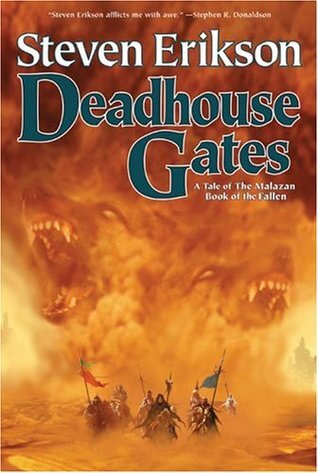 My journey through Steven Erikson’s seminal military fantasy work, “Malazan Tales of the Fallen” continued in August 2022 with Book Two “Deadhouse Gates”.
My journey through Steven Erikson’s seminal military fantasy work, “Malazan Tales of the Fallen” continued in August 2022 with Book Two “Deadhouse Gates”.
A small group of more minor characters from “Gardens of the Moon”, who seemed to take on much bigger significance near the end of that book, headline another huge assemblage of players in “Deadhouse Gates”.
I was left with a bit of a different impression of the writer’s work, after now reading two of his books. This book was longer (almost twice as long), and in parts, somewhat just as confusing to me as the previous one. But it was also even better-written, and I found the first book to be outstanding. I also ENJOYED this book more, and I believe that is primarily because I found the improvement in Erikson’s characterization astounding. I am a character-driven reader, and this book REALLY connected with me on that level. Thus, I enjoyed this book more than “Gardens of the Moon”, and that was an incredible, five-star read.
Aside from the improvements in characterization, this book differs from the first novel, in two main aspects that hit me every early in my reading. One: in “Gardens of the Moon”, the Malazan Empire looked almost entirely unbeatable. In this second book, its quite the contrary. Two: we leave most of the big players (such as Ganoes Paran, Anomander Rake, and Whiskeyjack) and the settings of book one (the continent of Genabackis and the free cities the Empire is trying to conquer) behind, and traverse hundreds of miles through an entirely different location – the Seven Cities and the very heart of the Empire.
Count on Erikson, worldbuilder extraordinaire, of course, to take an already massive cast of characters and bevy of places evidenced in the first book, and expand them even more. If after reading the first book, and having your head spin trying to keep up with everyone and everywhere, you were hoping for a bit of a respite, think again.
I also must admit, at first I was a bit disconcerted leaving some of my favourite aforementioned characters like Rake behind. With a series like Malazan, I feel one needs all the security blankets one can find, since I clung onto my favs for dear life to help me navigate the sometimes opaque and perplexing narrative of “Gardens of the Moon”. But after a shocking and compelling prologue, and meeting some great new players, I was quickly invested, though still looking forward to future books and hopefully learning the fate of those characters I grew to like in book one.
Four distinct storylines, which converge later in the novel, frame the story of “Deadhouse Gates.”
First, find Felisin Paran, youngest sister of Ganoes, in dire trouble. Felisin’s life is endangered as she finds herself, as a member of a noble house, in the middle of a carefully orchestrated selective slaughter of the Malazan Empire’s Seven Cities nobility. The orchestrator of the cull is the ever-devious Empress Laseen, still trying to wipe out any of those who were loyal to the previous Emperor Kellanved and his main ally Dancer (who she had murdered), and keep her grip on supremacy. Co-incidentally, Laseen’s new right hand is Adjunct Tavore, who just happens to be a sister of Paran and Felisin. Tavore is the general in charge of the culling of the elite.
This makes Felisin, understandably, incensed. She vows to kill her sister, as her sister has disavowed their family and former noble friends in favour of allegiance to the Empress, being willing to see Felisin die as well. But first Felisin will have to survive the violent riots seeking the death of the former ruling class, stirred up by Lassen. In self-preservation, Felisin teams up with an excommunicated former High Priest of the war deity Fener, named Heboric, and a strong-man named Baudin, who are also both caught up in the calamity. Though forced to associate with these two undesirable companions, Felisin is only beginning to understand how low she is going to sink from the heights of privilege, as she is destined for a place of even more danger, darkness, depravity, addiction, self-loathing, and emotional and physical trauma.
Second, we meet Mappo, a huge Trell warrior, and his travelling companion, the mysterious Icarium, who is a part Jaghut. These two extremely long-lived beings, with legendary reputations as fighters, have an unshakeable bond. It seems Mappo is hiding things, however, from his friend. Moreover, Mappo appears to be responsible for keeping Icarium from his worst demons, unbeknownst to Icarium. Icarium is also suffering from memory loss, which may be a good thing, as his past is shrouded in death and destruction. This seems at odds with his calm and restrained, even gentle nature displayed at times.
But shapeshifting beings called Soletaken and D’ivers are at war, trying to achieve Ascendency (which leads to godhood). Mappo and Icarium stumble unwittingly into the midst of this war, but they are a pair so formidable that even the deadly shapeshifters must tread lightly with. Still, fleeing the conflict, the two friends find themselves taking refuge with an insane High Priest of Shadow, Iskaral Pust, who has his own plans for the two.
Third, Dukier, Imperial Historian, joins the beleaguered 7th Malazan Army in the Seven Cities, at entirely the wrong time if one wants to stay alive. Revolution is imminent, and a holy war called “The Whirlwind”, that been prophesized to free denizens of the Empire form the tyrannical yolk of Laseen, has come. Sha’ik, prophetess of that Holy War, has whipped up her followers into a frenzy, convinced that they can overthrow their feudal masters. The seemingly indomitable Empire has never looked so vulnerable.
We learn the real reason that Lassen has cleverly and brutally culled the nobility was in as an attempt to placate the revolutionaries. But It’s not enough. Desperate, the Empress turns to the barbarian Wickan chieftain Coltaine. Coltaine’s repute is as a redoubtable warlord who led a revolt against Lassen’s predecessor, and eventually came over to the Emperor’s camp.
Much of the Malazan generalship disdains Coltaine as a savage, but he is a daring and highly capable commander who backs down from no one. Still, Coltaine’s marching orders are to retreat, safeguarding thousands of forlorn Malazan civilians enroute to the imperial city of Aren, which lies hundreds of leagues from Seven Cities. There is little hope for such a forced march – disparagingly know as “The Chain of Dogs” – to make it to Aren, but if anyone can do it, Coltaine can. Dukier just has to make sure he survives the journey, while trying to work his own schemes to save Heboric for his own purposes .
Finally, we return to four characters familiar to us from “Gardens of the Moon”, who at the end of that novel embarked on a mission to return one of those characters to their family. The gruff sapper Fiddler, the mysterious assassin Kalam, the former thief Crokus, and his lover Apsalar (Sorry) who was also a soldier, and once possessed by will of a capricious god, also arrive in Seven Cities. Instead of getting Apsalar to her hometown, the diversion to Seven Cities is part of a precarious, if not suicidal mission, conceived by Kalam and Fiddler.
These two plan to assassinate the Empress, who they believe is oppressing her citizens, and she also conspired to kill the famous Bridgeburners military unit Kalam and Fiddler are part of, who are now considered rebels and outlaws. But a mage who utilizes the power of song, may provide a way to make the rebellious Bridgeburners even more powerful, even as secrets behind who is actually leading the gods and demi-gods of House of Shadow and those leaders connections to the empire, are revealed by the formerly possessed Apsalar.
I spoke of Erikson’s improvement in characterization in the beginning of this review, and it is marvellous to see. The damaged Felisin is the lynchpin for the entire plot, and her character is phenomenal. Bitter, devious, full of self-loathing, false rationalizations for her meanness, cruel to those she cares about most , motivated by revenge and self-preservation, drug-addicted, yet fiercely loyal, brave, determined, and cunning, she is a stupendous, tragic character. The reader will aghast at what she undergoes in the book, and at moments will despise her, and other moments root for her, hoping she will live long enough to change. She was definitely my favourite character, and for the most part is completely unlikeable.
Coltraine was another one of my favs. The underdog, whom military elitists look down their noses on, he is ruthless, clever, conniving. And he’s just the man needed to save tens of thousands of innocent people, while staving off internal revolt among his soldier, and the rabid army that seeks the destruction of the 7th and the Malazan refugees. Also very intriguing were Mappo and Icarium. For some reason, the pair reminded me of Dante and Virgil in Dante’s “Divine Comedy”. Allegorically representative of achieving oneness with God, in the face of sin and death, Divine Comedy features two heroes who ultimately are observers to grand events beyond their control. I get this same feeling with Mappo and Icarium, even though they are very much involved in the action, and are far from casual in their witnessing of events.
In terms of themes, this book, for me, was far bleaker and more harrowing than “Gardens of the Moon”, and that is saying something, for that first book was quite dark. Prostituting oneself to survive, attempted sexual assault and exploitation of children, genocide, torture, war atrocities, fanaticism, betrayal, murder, madness, revenge, pettiness, emotional trauma, war and its enormous cost, the themes in “Deadhouse Gates” may give you pause especially during some of the harsher scenes. The images will haunt you; they are visceral, bloody, and horrendous.
The creepy and malevolent dark sorcery, violence, and mayhem occurs in the face of the fortitude, bravery, noble self-sacrifice, and deep-seated sense of compassion among some characters that they must not unnecessarily take lives, and kill only as a last resort to defend themselves and others. This abhorrence of violence among some of the people capable of the most horrific violence in the book – such as Fiddler and Icarium – was very poignant, and something that stood out to me. The spectre of meddling gods, and their sinister designs on the realm of mortals, looms large in the book, although we actually see less of them in “Deadhouse Gates” than we do in “Gardens of the Moon”. Rather we see what they have wrought, their freakish servants and creations, and see the sometimes hapless humans and other creatures who are caught in their web of divine plots and intrigues.
In terms of prose and quality of writing, the more I read “Malazan” the more I am reminded of one of Erikson’s contemporaries, Stephen R. Donaldson, whose work I definitely admire. There are some really lovely, beautifully descriptive passages. Additionally, there is definitely more pronounced ironic humour from the beginning that I only started to pick up on late into “Gardens of the Moon” in this second book.
I mentioned the worldbuilding earlier – Erikson is in rare air here, with the Janny Wurts, George R.R. Martin’s, and N.K. Jemisin masterclass crowd in terms of his depth and intricacy of worldbuilding. To keep it simple, seldom will you find something more elaborate and comprehensive. It is also overwhelming, at times in terms of scale, but one can’t deny the genius. Magic warrens, shapeshifters, gods and demons, numerous and varied races, cultures, histories, traditions, and customs, this book and series have everything one could ask for in terms of worldbuilding. And yes, it has things you don’t ask for, the details of which may bog you down if you let it. But don’t. Just let it enrich the experience, and don’t get lost in all the detail. You will enjoy your reading more.
Of note, there were some large scale battles in the book, as well as plenty of smaller conflicts. Irrespective of size, the fight scenes were magnificent, and in particular Erikson effectively captures all the gruesomeness, heartbreak, and glory of a millitary campaign.
If I have not already confirmed in my review of “Gardens of the Moon”, this series, for me a new reader to Erikson, is a phenomenal achievement. Yet perhaps, more importantly, it is a fabulous EFFORT. Erikson endeavours to have an immense character list and follow multiple character arcs while trying to flesh out MOST of his characters to a degree that they are optimally realized. He strives to create a world so complete that it is staggering in scope and imagery, while still feeling intimate and something you can touch, smell, hear, and feel.
He undertakes a plot that is very complex, and works to keep it enthralling and simultaneously moving forward in a cohesive manner. He works at maintaining prose that is impactful, in order to hold the readers interest for nigh a thousand pages. I think he largely manages to succeed – a feat in of itself. The sheer boldness of the attempt must be acknowledged, even though at times he may fall a little short, in my estimation. If he does fall short, that is under the weight of the complicated backstory, twisty plot, innumerable cast of players. But any writer who is so uncompromising and meticulous in his desire to create something grand, and for the most part delivers, has to be considered brilliant.
This book is a tome, it is dense, and it can be laborious and challenging to read. But I do feel it was worth every page. It is a magnificent novel, and nothing has dissuaded me yet from continuing the “Malazan” series, despite any shortcomings. I will be proceeding with “Memories of Ice” before year’s end, and look forward to complete my reading of the epic saga sometime prior to the end of 2023. I believe I will look back and be glad I did, if the first two books are any indication.
Buy from Amazon
Deadhouse Gates•Deadhouse Gates•Deadhouse Gates•Deadhouse Gates•Deadhouse Gates•Deadhouse Gates•Deadhouse Gates•Deadhouse Gates•
The post Review – DEADHOUSE GATES by Steven Erikson appeared first on BEFOREWEGOBLOG.
September 2, 2022
5 Fantasy or Science Fiction Books With a Character Named Bob
Why Bob you ask? The question is, why not Bob?
There is an entire series dedicated to a character named Bob, or a skull sidekick named Bob. Robert Baratheon the fictional character in the A Song of Ice author George R. R. Martin was probably never called Bob, but definitely could have been. Then we have Bobby Pendragon the titular character from the series of the same name, and lastly we have The Dread Pirate Roberts, terror of the seas from Princess Bride.
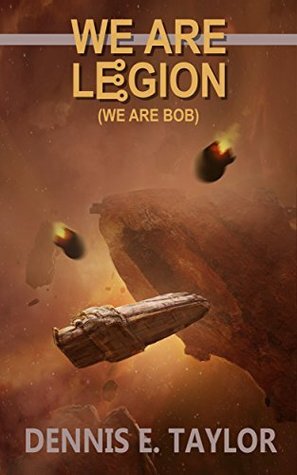
1. - Bob the LegionWe Are Legion (We Are Bob)By Dennis E. Taylor
“WAKE UP, BUDDY. YOU OKAY?” “AUNTIE EM! AUNTIE EM!” HOMER’S VR CAME ONLINE, SMILING. “I GUESS WE GOT’EM.” I SNORTED WITH RELIEF. “AND THEIR LITTLE DOG, TOO.” HOMER STEEPLED HIS FINGERS IN A PROPERLY EVIL MASTERMINDISH POSE. “ALL THEIR BASE ARE BELONG TO US.”
About We are Legion, We are Bob
Bobiverse fans: a signed limited edition of all three books in a boxed set, signed by the author, is now available on Amazon. Look for The Bobiverse [Signed Limited Edition] on Amazon
Bob Johansson has just sold his software company and is looking forward to a life of leisure. There are places to go, books to read, and movies to watch. So it’s a little unfair when he gets himself killed crossing the street.
Bob wakes up a century later to find that corpsicles have been declared to be without rights, and he is now the property of the state. He has been uploaded into computer hardware and is slated to be the controlling AI in an interstellar probe looking for habitable planets. The stakes are high: no less than the first claim to entire worlds. If he declines the honor, he’ll be switched off, and they’ll try again with someone else. If he accepts, he becomes a prime target. There are at least three other countries trying to get their own probes launched first, and they play dirty.
The safest place for Bob is in space, heading away from Earth at top speed. Or so he thinks. Because the universe is full of nasties, and trespassers make them mad – very mad.
Buy from Amazon
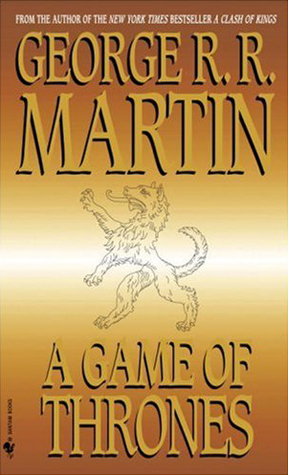
2. - Robert BaratheonA Game of Thronesby George R.R. Martin
“I’m not trying to honor you. I’m trying to get you to run my kingdom while I eat, drink, and whore my way to an early grave.“―Robert Baratheon to Eddard Stark
About Game of Thrones
Here is the first volume in George R. R. Martin’s magnificent cycle of novels that includes A Clash of Kings and A Storm of Swords. As a whole, this series comprises a genuine masterpiece of modern fantasy, bringing together the best the genre has to offer. Magic, mystery, intrigue, romance, and adventure fill these pages and transport us to a world unlike any we have ever experienced. Already hailed as a classic, George R. R. Martin’s stunning series is destined to stand as one of the great achievements of imaginative fiction.
A GAME OF THRONES
Long ago, in a time forgotten, a preternatural event threw the seasons out of balance. In a land where summers can last decades and winters a lifetime, trouble is brewing. The cold is returning, and in the frozen wastes to the north of Winterfell, sinister and supernatural forces are massing beyond the kingdom’s protective Wall. At the center of the conflict lie the Starks of Winterfell, a family as harsh and unyielding as the land they were born to. Sweeping from a land of brutal cold to a distant summertime kingdom of epicurean plenty, here is a tale of lords and ladies, soldiers and sorcerers, assassins and bastards, who come together in a time of grim omens.
Here an enigmatic band of warriors bear swords of no human metal; a tribe of fierce wildlings carry men off into madness; a cruel young dragon prince barters his sister to win back his throne; and a determined woman undertakes the most treacherous of journeys. Amid plots and counterplots, tragedy and betrayal, victory and terror, the fate of the Starks, their allies, and their enemies hangs perilously in the balance, as each endeavors to win that deadliest of conflicts: the game of thrones.
Buy from Amazon
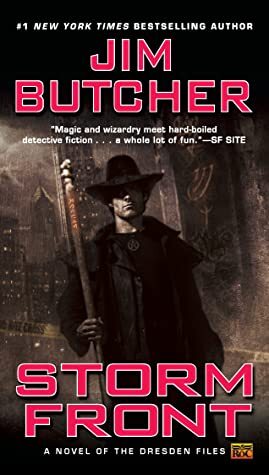
3. - Bob the SkullStorm Frontby Jim Butcher
“Paranoid? Probably. But just because you’re paranoid doesn’t mean there isn’t an invisible demon about to eat your face.”
About Storm Front
HARRY DRESDEN — WIZARD
Lost Items Found. Paranormal Investigations. Consulting. Advice. Reasonable Rates. No Love Potions, Endless Purses, or Other Entertainment.
Harry Dresden is the best at what he does. Well, technically, he’s the only at what he does. So when the Chicago P.D. has a case that transcends mortal creativity or capability, they come to him for answers. For the “everyday” world is actually full of strange and magical things—and most don’t play well with humans. That’s where Harry comes in. Takes a wizard to catch a—well, whatever. There’s just one problem. Business, to put it mildly, stinks.
So when the police bring him in to consult on a grisly double murder committed with black magic, Harry’s seeing dollar signs. But where there’s black magic, there’s a black mage behind it. And now that mage knows Harry’s name. And that’s when things start to get interesting.
Magic – it can get a guy killed.
Buy from Amazon

4. - Bobby PendragonThe Merchant of Deathby D.J. MacHale
“Whenever you look back and say “if” you know you’re in trouble. There is no such thing as “if”. The only thing that matters is what really happened.”
The Merchant of Death
DENDURON
Bobby Pendragon is a seemingly normal fourteen-year-old boy. He has a family, a home, and even Marley, his beloved dog. But there is something very special about Bobby.
He is going to save the world.
And not just Earth as we know it. Bobby is slowly starting to realize that life in the cosmos isn’t quite what he thought it was. And before he can object, he is swept off to an alternate dimension known as Denduron, a territory inhabited by strange beings, ruled by a magical tyrant, and plagued by dangerous revolution.
If Bobby wants to see his family again, he’s going to have to accept his role as savior, and accept it wholeheartedly. Because, as he is about to discover, Denduron is only the beginning….
Buy from Amazon
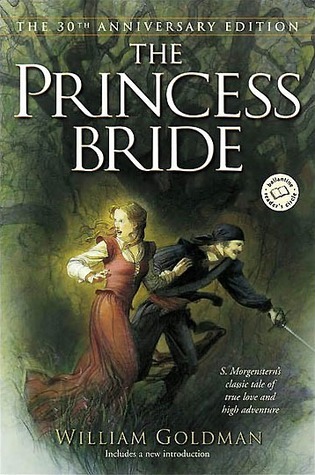
5. - The Dread Pirate RobertsThe Princess Brideby William Goldman
“Good night, Westley. Good work. Sleep well. I’ll most likely kill you in the morning.”
About Princess Bride
What happens when the most beautiful girl in the world marries the handsomest prince of all time and he turns out to be…well…a lot less than the man of her dreams?
As a boy, William Goldman claims, he loved to hear his father read the S. Morgenstern classic, The Princess Bride. But as a grown-up he discovered that the boring parts were left out of good old Dad’s recitation, and only the “good parts” reached his ears.
Now Goldman does Dad one better. He’s reconstructed the “Good Parts Version” to delight wise kids and wide-eyed grownups everywhere.
What’s it about? Fencing. Fighting. True Love. Strong Hate. Harsh Revenge. A Few Giants. Lots of Bad Men. Lots of Good Men. Five or Six Beautiful Women. Beasties Monstrous and Gentle. Some Swell Escapes and Captures. Death, Lies, Truth, Miracles, and a Little Sex.
In short, it’s about everything.
Buy from Amazon
The post appeared first on BEFOREWEGOBLOG.
Interview with Patrice Fitzgerald and Jack Lyster, co-authors of Captain Wu: Starship Nameless #1
In spite of everything, Wu smiled “Yeah, I think we can feel proud of just how irritating we’ve managed to be” she said. “yay for us”
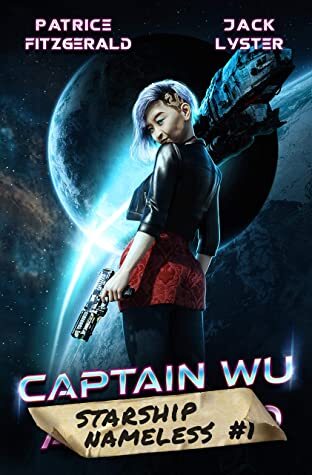 About Captain Wu
About Captain Wu
Captain Wu’s the name. Smuggling’s her game.
To be fair, they only started shooting after she started insulting them.
She was just about to hand off the package—Wu didn’t know what was inside, and she didn’t want to—when three tentacle-faced strangers attacked.
Wu loves a good fight and lives for a good heist. The Captain and her crew make their living taking undercover assignments from questionable clients… and it pays. Or at least, it used to.
But this time the merchandise is a little too hot to handle. So when the squid-shaped xenos show up and destroy the guys who are there to receive it, Wu is barely able to make it back to her ship alive. Soon the Nameless is racing around the galaxy with not only the powerful Commonwealth on its tail, but another dangerous creature bent on revenge.
And then an unexpected visitor arrives, putting Wu and her crew in the position of taking care of some very precious cargo. Is it time for the Captain to give up criming and retire to a sedate life more suitable for a woman of her age?
Not a chance.
BWG: What do you think makes a good story?
Patrice: There are so many ways to tell a good story! I think that it’s important to pull the reader right into the action, to have a compelling main character with contrasting personalities around her or him, and to lean into the conflict. Ideally, your story is entertaining and surprising but is more than just fluff—it has some kind of moral center and makes a point about what’s important—although it can make that point by having it end in opposition to what is good and right. And then you might have to write a sequel to save the world!
Jack: I’ve always felt telling a good story is about immersion first. Yes, it’s good to have some kind of message to communicate, but the stories that really seem to stay with me, the ones that I keep thinking about again and again and going back to, are all the ones that pulled me in and made me feel as if I was a part of their world. There are a million ways to achieve that of course, and character is probably the best—because real and believable people can make a story seem real even when they’re placed in absurd situations—but it also helps to have a world that operates on some kind of logical base and is reflective in some way of the world we know.
BWG: How did you get into writing? Were there any catalysts in your life that set you on your path to loving the written word?
Patrice: Like so many writers, I was a great reader. And so I wanted to create stories myself from an early age. But I often wanted to do the things I saw adults doing when I was a kid. I considered teaching, singing, writing, doctoring, lawyering, and even ministry as I went through life. (That last one not for very long!) I ended up as a singing lawyer who writes and publishes.
Jack: I have never really not been a writer. I spent a lot of time as a child making up stories and drawing maps of fantasy worlds. My mother read “The Hobbit” to me when I was too young to read it myself, and then I read it again as soon as I could. I can remember being in primary school and telling the other kids what happens in the book, except that I was adding in new events and new characters as I told them. I spent most of my school years daydreaming of fantasy and science fiction worlds. When it came time to go to university it was sort of obvious that I had to study literature and creative writing. Despite starting off so enamored of genre fiction though, it took a while to convince myself that I wanted to write it seriously. For a long time, I was trying to be the next Patrick White or Virginia Wolfe. It took a while for me to figure out that wasn’t really who I was.
BWG: What comes first for you, the plot or the characters, and why?
Patrice: The plot. I tend to envision a scene or two forces in opposition, and then I create the people to bring that conflict to life.
Jack: Characters. Probably no surprise to anyone there. I often have characters floating around in the back of my brain for years before I find a good plot for them. Oftentimes it’s easier for me to just start writing about a character and see what plot develops than to try and make it go the other way.
BWG: How was your first SPSFC? If you have other books, do you think you will submit them to future contests?
Patrice: It was lots of fun! I was thrilled to get to the end of the competition and see that our book—the first in the Starship Nameless trilogy, which is a space opera adventure—had placed so highly. Jack and I have released the second and third books in the trilogy already. We’re in the process of editing the first book in the next trilogy, which centers on Rev, Captain Wu’s slightly peculiar pilot, who is one of the main characters in the first one. I can’t wait to expand the Starship Nameless universe!
And yes, I would love to submit another book to future contests. But for 2022 I’ve volunteered to be part of a team that helps judge the competition, so that’s not an option for me right now.
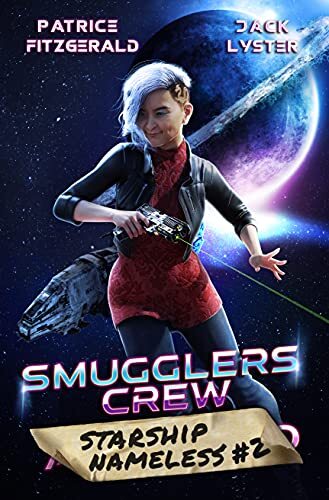 Jack:
This whole thing was incredible. When I first heard that we were involved, my initial reaction was, “Wow, that’s great, but it’s not like we’re going to survive past the first round so I won’t worry about it too much.” And then people kept saying nice things about the book, and we kept getting through and I was more and more amazed each time.
Jack:
This whole thing was incredible. When I first heard that we were involved, my initial reaction was, “Wow, that’s great, but it’s not like we’re going to survive past the first round so I won’t worry about it too much.” And then people kept saying nice things about the book, and we kept getting through and I was more and more amazed each time.
I would absolutely submit to future contests but seeing as how my co-writer is going to be one of the judges, I feel there might be a teeny bit of conflict of interest if we tried that with any more of the Nameless books.
BWG: What was the best part of the SPSFC experience?
Patrice: I think it was the excitement as it wrapped up and I could see our book and others making progress through the judging teams. I also loved the reviews the judges wrote and published—it was flattering and enlightening to read their reactions.
Jack: Seeing all the other books! I have a such a fantastic reading list now. To be perfectly honest, prior to meeting Patrice I wasn’t very involved in the self-published side of sci-fi and fantasy and I didn’t know how much was actually out there. This contest has been eye-opening.
BWG: For readers unfamiliar with your work, can you tell us about your SPSFC entry?
Patrice: Captain Wu , the first book in the Starship Nameless trilogy, is a fun romp through an intergalactic future with a bunch of charming misfit smugglers. It has shades of steampunk, quite a lot of wry humor, and features a sixty-something grandma who fights xenos barehanded to let off steam. Lots of quirky characters and many dangers that our hardy band just barely escapes.
Jack: Patrice has pretty much covered it. The Nameless books, for me, are primarily about fun and adventure. They’re pulp sci-fi, with all the necessary explosions and ray-guns that requires.
BWG: Where did you get the idea for your book?
Patrice: I have to admit that the original concept came from Jack, who is a genius writing machine from Australia… whom I’ve never met! He submitted a short story involving elements of the Starship Nameless universe to one of my space opera anthologies, BEYOND THE STARS: Infinite Expanse. And I was so taken with that story and his writing that I asked him if we could cowrite.
We know each other pretty well now through the written word both in books and email, and I’ve even spoken to him on the phone. But I think he might secretly be a hobbit. (Wait—that’s New Zealand, right? Or Middle Earth, actually. Both of which I visited… at least, I visited the Hobbiton set in NZ… but I didn’t know him then, or I would have swung by to meet him in Oz!)
Jack : First of all, Patrice, I am a hobbit, no secret about it. We have hobbits in Australia too, they migrated here from the Shire to escape the scouring by Saruman and are now a beloved part of Australia’s multi-cultural society.
As for the idea for this book, there are really two answers to that.
The first is that I started building the Perseus Arm so that I could run a table-top role play game for my friends, that was set there several years go. They played as a crew of bounty hunters and explored many worlds that have since ended up appearing in these books. That’s part of the reason there’s so much left to write about in this universe. Even after the game finished, I kept adding notes and coming up with ideas of things to add. Characters, locations, conflicts that could arise. I did think for a long time about putting it all into one large novel, or series of novels. Then I met Patrice, and she was the one who suggested doing smaller stories and trilogies set around the larger plot points, so I went away and came up with some suggestions. One of those suggestions was essentially “A bunch of smugglers end up with a package that they shouldn’t have.”
The second answer is that I came up with the character of Wu because I was annoyed by Star Trek Discovery casting Michelle Yeoh as a captain and then sidelining her. I’m not actually much of a Trekkie and haven’t really watched much of the show. I am however—and no one gets any prizes for guessing this—a huge fan of old Hong Kong action movies, and Yeoh is a favorite actress of mine. The idea that Star Trek was going to have this badass lady in her 60s (well, OK, at that point she would have been mid-fifties) as captain, got me very excited to watch, particularly knowing that she was still able to do a lot of the action moves from the old days. I wanted to see her beat up a Klingon! But alas, no, before I even got a chance to watch the show, I’d heard that she wasn’t actually going to be the lead and would only be in the first couple of episodes.
That would have been in 2016, so since then I have been carrying around the idea of an older woman martial artist on sci-fi adventures in the back of my mind. I was just waiting for a good plot to show up for her. There were a few early ideas about her running a bar on Mars that I kicked around for a while. Lilly, her estranged granddaughter, would show up needing help, with thugs after her or something like that. Those ideas never built to much of anything though.
Then, one day, the wonderful Patrice said she liked the smugglers on an adventure idea of mine, and everything just clicked into place.
Oh, and the family name comes from Naomi Wu, a technology reviewer on YouTube from Shenzhen, who was a big part of the inspiration behind Lilly’s tech savviness.
BWG: What was your most brutal scene to write, and why?
Patrice: True confessions: Jack and I work out general plot arcs and characters, and then he writes the first draft. I do the tweaking, editing, fine-tuning, etc. But for myself I would say the toughest scenes are the ones without a bunch of pew-pew, and with more conversation than action. You need to have them in there to give life to a story and the characters, while not bogging down the book. Also, endings are hard. And of course, beginnings. Though middles are probably the hardest of all. It’s all kinda hard! But fun.
Jack: The first one that comes to mind is one I won’t actually mention because it happens toward the end of the second book in the Starship Nameless trilogy and it’s a huge spoiler. If anyone has read that particular book you probably don’t need me to clarify which scene in particular. It’s exactly the one you’re thinking of.
As for book 1, Captain Wu , the hardest to get right was probably Wu’s meeting with her old boyfriend Tell. At that point Wu’s history is still mostly obscured and the exact nature of her relationship with this guy hasn’t really been communicated. What ended up in the finished product was very toned down from what it was in my very first draft. It’s not a spoiler to say that Tell is not a good person, but that was made a lot clearer to begin with. I actually liked some of those early sketches of that scene, as slightly icky as they were to write, but ended up feeling like they completely broke the fun light tone of the first book. The second is a bit darker overall, and features Tell more heavily, so a lot of what was cut there ended up being reused.
BWG: What is a significant way your book has changed since the first draft?
Patrice: The first draft I saw was pretty darn good—since, as I mentioned, Jack is a writing phenomenon. I would say that it was tightened and simply cleaned up. A writer often doesn’t know how much weight to give each scene or “beat” in a book until the whole thing is finished, and then you go, “Aha! That needs more time, and this part is slowing it down, and I need to sprinkle in a little more conflict, a battle or two, and lose this dull part.” So our first draft was quite good and simply needed smoothing.
Jack: Well, there’s the first draft that Patrice read, and then there’s the actual first draft which was burned in a fire and shall never see the light of day again.
I’m kidding, of course, but there were some early ideas that got tossed. The big one was probably the role of the Com themselves in the plot. Originally, everything was going to be completely under their radar, and involve groups much lower down the pecking order of dangerous in this world. But then, as the story unfolded, it seemed more and more natural to bring them in.
 BWG: There is usually research of some form when writing a Sci-fi novel. Were there any exciting bits of research or rabbit holes you went down writing the book?
BWG: There is usually research of some form when writing a Sci-fi novel. Were there any exciting bits of research or rabbit holes you went down writing the book?
Patrice: Jack and I have both spent our lives reading SF, as well as lots of other genres, and I’ve written my own SF, cozy mystery, and historical romance novels, so that was the research I needed to do about writing itself. I would say that Jack did the digging into rabbit holes (falling into rabbit holes?) in checking astronomical terms and making sure of physical details or space travel phenomena. In fact, I think he’s still trying to find his way out of a stargate as we speak…
Jack: The biggest rabbit hole I went down was rotational gravity generation. The idea of using a spinning space station to be able to have apparent gravity in space. I know this is a sci-fi staple at this point, but I’ve rarely seen it explored in much depth and wanted to get it right. The biggest question I was trying to answer was, when you were moving toward or away from the center would the apparent force increase or decrease? Would somewhere like Meridian have higher gravity on the outer edges than it did in the center? I tried to teach myself a bunch of physics and do a lot of the math myself to get to an answer. In the end, I had to give Meridian free-rotating inner sections to allow it to make sense on the scale I wanted it to, so not all of the station spins at the same rate.
The other big one was to do with starships overheating in space. It’s a misunderstanding that space is “cold”—it’s very much not. Vacuum is the ultimate insulator, so any heat generated in a system has nowhere to go unless it can be converted into radiation of some kind, typically infra-red. For the kind of starships I wanted—bulky, clunky old things with big nuclear propulsion engines—it didn’t make sense to just ignore the fact that they would be in constant danger of overheating. Not much of this ended up in the final book, but I could tell you a lot about the vast acetone-based coolant systems that these ships employ and how they work. Also, the oxygen “candle” that generates O2 heats up a lot as well, and has to be shut down whenever the coolant system is taken offline, which means they operate on “passive” life support—essentially just CO2 filtration—any time that they can’t run the engines because the coolant system requires the engine to be spinning to pump it around the ship and…
You know what, I’ll stop now before I end up writing a whole extra book on starship engineering. The important takeaway is probably that, at every stage of designing these things I asked myself the question “Yes, but is this the most dangerous way that they could do this?” I really, really like the idea of starships being horrible deathtraps with about a million different things that could go wrong on them. At all times they should be about a second or two away from overheating and exploding, otherwise it’s not a proper starship.
BWG: What do you have coming up in the future?
Patrice: A whole world of stories set in this universe! We have the entire second trilogy drafted, starring Captain Wu’s fabulous pilot and sidekick, Rev. And Jack has a million more ideas floating around his fertile frontal cortex. It’s only a question of capturing all that imagination on paper. I hope we’ll be exploring the Starship Nameless Universe for years to come.
I also typically publish one of my BEYOND THE STARS anthologies filled with space opera short stories every year, but I haven’t put one out in 2022 because I was concentrating on the first SNU trilogy. I hope to get a new one out next year.
So many new tales to tell!
Jack: I have so, so, so much more that I want to write in this universe. The immediate ones that Patrice mentioned above, as well as lot more. I’m not joking when I say I have years of ideas in the back of my mind. I won’t tell much now, since a lot of it is in early drafts, but there are a lot more planets and systems and characters that are ready and waiting to have their stories told, that no one but me and Patrice have even met yet.
Buy from Amazon
Captain Wu•Captain Wu•Captain Wu•Captain Wu•Captain Wu•Captain Wu•Captain Wu•Captain Wu•
The post appeared first on BEFOREWEGOBLOG.
September 1, 2022
Television Review – Rings of Power Season 1 -E1 & E2

THE RINGS OF POWER is fine, specifically 1×1 “A Shadow of the Past” and 1×2 “Adrift”, are fine. This is something that I feel is both damning as well as an argument against all the criticism the show has unfairly received before it has even begun. The show is breathtakingly beautiful, the soundtrack is extremely enchanting, and the characters are entertaining as well as competently acted. However, for those hoping to be transported back to JRR Tolkien’s Middle Earth, the show basically feels like about a faithful an adaptation as a Middle Earth themed MMORPG.
Part of this was inevitable as the adaptation of the Second Age of Middle Earth is going to be primarily new material. We’ve already got the fantastic Lord of the Rings movies and the not-so fantastic The Hobbit movies. However, here, this is just creating original stories based around the rough outline of events that J.R.R Tolkien sketched as backstory. The Silmarillion is a fantastic book, but I’ve never quite believed it could be faithfully adapted.
Even in the first five minutes, the lore violations start piling up. Galadriel talks about how the light of Valinor was taken by Morgoth (so far so good), only for her to then say that she went to fight the Great Enemy on Middle Earth. Which, no she didn’t. We skip over Feanor, the Kinslaying, and a huge chunk of the backstory between. Beren and Luthien is also not given a mention, which seems another egregious time-skip since we have another human/elf love match in the show.
 We also basically skip the entirety of the fact that Galadriel didn’t believe Morgoth could be defeated by force of arms (which he couldn’t) and depict her and the elves defeating him. Which, of course, is nonsense because Morgoth is defeated by the Valar and no mention of the literal archangels is made in the series. It’s a rather conspicuous absence given they utterly wreck Middle Earth defeating Tolkien’s version of Sauron.
We also basically skip the entirety of the fact that Galadriel didn’t believe Morgoth could be defeated by force of arms (which he couldn’t) and depict her and the elves defeating him. Which, of course, is nonsense because Morgoth is defeated by the Valar and no mention of the literal archangels is made in the series. It’s a rather conspicuous absence given they utterly wreck Middle Earth defeating Tolkien’s version of Sauron.
Instead, the show is primarily focused on Galadriel attempting to avenge her brother that was slain by Sauron and her Knight Templar-esque dedication to tracking the Dark Lord down to kill him. This isn’t entirely inaccurate, three of Galadriel’s brothers did in fact die during the battle against Morgoth’s forces. However, none of the other elves believe Sauron is still a threat and the show is about how, surprise, Galadriel is right, and the monster is coming back.
Much has been made of Galadriel being depicted as a warrior woman as well as the show having a more ethnically diverse collection of elves, hobbits, and dwarves. The latter doesn’t bother me at all and I’m not going to waste wind on it. The former is only annoying because Galadriel is a SORCERESS, and it feels like she’s taking a major power downgrade in stabbing things versus blasting them with her evil destroying light.
Indeed, the more the show tries to act like this is JRR Tolkien’s work versus something that they’ve wholly invented, the more the show stumbles. They could have based this show around Isildur, they could have based this show around Beren and Luthien, and they could have done a series of Silmarillion movies. Instead, this is a wholly original as well as competently done fantasy series that is pretending it was by the master.
I feel it’s less faithful than Middle Earth: Shadow of Mordor and I like those games, but they are really inaccurate. Oh, and Sauron returns to Middle Earth via a comet. There, he’s adopted by a bunch of rural Hobbit farmers. No, I don’t know why Sauron is Superman now. Maybe it’s not Sauron, maybe it’s Gandalf, but that would be a millennium early.
There’s some genuinely good parts like any part involving dwarves. The dwarves in this show are the most animated, entertaining, and energetic characters. Also, whenever the show interrupts its ponderous narration to do some actual action scenes. Mind you, a Tolkien adaptation should never be defined by its action, but it says something that this works best when it is.
The original characters are fine, the plotting is fine, and the show is fine. However, it’s also something that doesn’t feel like an authentically Tolkien work. It feels like very well-done Middle Earth fanfiction and I feel like that’s probably all it ever could be with the Second Age premise. I’ll probably keep watching it but it’s not must-see TV like certain other fantasy shows I’m watching.
RINGS OF POWER•RINGS OF POWER•RINGS OF POWER•RINGS OF POWER•RINGS OF POWER•RINGS OF POWER•RINGS OF POWER•RINGS OF POWER•
The post Television Review – Rings of Power Season 1 -E1 & E2 appeared first on BEFOREWEGOBLOG.
Game Review – Middle Earth Shadow of War
 MIDDLE EARTH: SHADOW OF WAR is the sequel to the highly popular and enjoyable MIDDLE EARTH: SHADOW OF MORDOR. It was a somewhat blasphemous and fascinating take on the classic Tolkien Legendarium, having its protagonist seek to use necromancy as well as other dark magic to fight the Dark Lord with his own power. You know, the one thing that is constantly warned against by Tolkien as self-defeating but we kind of would be curious as to how it would go.
MIDDLE EARTH: SHADOW OF WAR is the sequel to the highly popular and enjoyable MIDDLE EARTH: SHADOW OF MORDOR. It was a somewhat blasphemous and fascinating take on the classic Tolkien Legendarium, having its protagonist seek to use necromancy as well as other dark magic to fight the Dark Lord with his own power. You know, the one thing that is constantly warned against by Tolkien as self-defeating but we kind of would be curious as to how it would go.
Since this is a direct sequel, a brief recap is warranted: Talion is a Ranger of the North without the powerful blood of Numenor running through his veins. After a sneak attack by Sauron’s forces, he ends up being possessed by the elven smith Celebrimbor. Talion manages to do a good deal of damage to Sauron’s war machine but the realization that the Dark Lord is just getting started is enough to get him to convince Celebrimbor to make a new ring.
The game starts immediately after Talion sneaks into Mount Doom and proceeds to smith himself a ring with Celebrimbor’s help. I would have actually enjoyed sneaking into Mount Doom and am a bit disappointed that Talion didn’t have to do so. Either way, Celebrimbor pours his life force into the New Ring (along with yours) but has it almost immediately stolen. This is meant to explain why Talion goes from an orc-slaying badass Ringwraith to a complete weakling again but also actually fits the fact the Rings of Power can never be trusted.
Unfortunately, this is also where the story starts to go completely off the rails and never quite gets back on them. Specifically, the New Ring is stolen by Sexy Shelob. Yes, the giant spider who almost ate Frodo. Apparently, she can assume a form that can best be described as “Morrigan from Dragon Age in an evening dress.”
Much has already been made of this bizarre lore change, somewhat akin to Godzilla becoming a hot Japanese school girl, but I could meet them halfway on this. Plenty of mythological creatures assume the form of sexy women to eat people because ancient peoples had serious issues with misogyny: vampires, sirens, succubi, kelpies, deer women, and so on. It’s just Shelob doesn’t have her one characterization trait and instead works as a kind of anti-Galadriel, putting Talion on the road to destroying Sauron. Because, apparently they used to date.
Oh sweet Eru.
No.
Seriously, you have no idea how badly you must screw with the lore to get me to not support more pale raven-haired witches in fiction. Not saying it’s a fetish but it’s a fetish. Anywho, Talion has to use his unholy powers, diminished as they are, to try to help protect Minis Ithil from an invasion of orcs. I mean, technically the citadel should have fallen a thousand years before, but this Sauron is just getting started.
Talion meets a cute pint-sized Eowyn named Idril, her Haradrim captain, and father before asking, “Could I please have your palantir because the ghost in my head wants it before Sauron gets it?” This goes poorly and becomes a bickering conflict between Talion wanting to save lives and Celebrimbor seeking absolute power to defeat Sauron.
The story is pretty complex and spread across multiple zones of Mordor. Some of the ideas are quite interesting as you apparently meet an Ent-Wife (or their patron Maia), you have to deal with a cult of necromancers, contend with a Balrog waking up, and finally have the Nazgul introduced since Sauron is well and truly tired of Talion/Celebrimbor’s bullshit.
Frankly, some of these would have made pretty good games themselves and I kind of think it’d have been hilarious if instead of Sexy Shelob, they’d made Durin’s Bane be the beautiful woman who stole Celebrimbor’s ring. That would have been ridiculous but not necessarily lore breaking. Who says the Balrog can’t be female? Plus, as a Maia, the idea they can assume a human form goes with the territory. She’d probably be a redhead, though.
Sadly, the weird lore breaking gets even worse as the game goes on as we find out the identities of the Nazgul like Helm Hammerhand, Isildur, and a group of Chinese-themed twin sisters (DLC only). There’s also a guy who was clearly meant to be Al-Pharazon but they changed his name, which is about the only smart move they did. This is just silly because the people who know who these people are don’t want to see them stuck with entirely different characters. It’s like revealing Darth Revan’s true identity was Luke Skywalker all along. Even if you explain that he was transported back in time via a wormhole, that doesn’t make it less stupid.
Unfortunately, as silly as the world-building is and the game’s inability to commit to any of its interesting ideas (I’d happily play an entire game of Talion versus a Balrog), the storytelling is by far the best part of the game. The gameplay is decent but the attempt to make it a much-larger open world game and introduce base management elements doesn’t really improve it. The previous game benefited fantastically from the Nemesis System where artificially generated orcs are used to harass Talion, but this has a lot more predetermined ones that are less interesting. There’s also a lot more of them so by the time you’ve killed your 50th Captain, you’re kind of sick of them.
Perhaps the most egregious of trying to push the gamers into unnecessary time-wasting content is that to get the “true” ending, you must do ten sieges of your bases by Sauron’s forces. Sieges are not particularly enjoyable, and these are lacking in any form of story. It’s just time-wasting busy work for a short cutscene that should have been at the end of the game anyway.
I feel like the game doesn’t make use of its set pieces very well, either. You have an entire mission chain in the area around Mount Doom and you never get to go inside but for the New Ring forging scene. The New Ring’s powers are also not particularly well-defined with mind-control being an ability you had in the previous game. I feel like when introducing something like a new Ring of Power, you need to be a little more grandiose in your ambitions. There was more to complain about the game, like loot boxes, but, thankfully, the developers removed those.
In conclusion, Middle Earth: Shadow of War suffers from the fact that they wanted to appeal to the broadest audience possible and that meant making some very big compromises in the lore. I like the original characters for the most part and wouldn’t have had a problem if they had just made Sexy Shelob into another previously unknown fallen Maia. It’s already fanfic with Talion and company, that doesn’t mean it has to be bad fanfic. It’s still a lot of fun playing this game, branding orcs and mind-controlling them, but it’s not as fun as its predecessor due to the slog as well as attempts to push the sieges as a main gameplay element.
Shadow of War•Shadow of War•Shadow of War•Shadow of War•Shadow of War•Shadow of War•Shadow of War•Shadow of War•
The post Game Review – Middle Earth Shadow of War appeared first on BEFOREWEGOBLOG.
Review – Slaying the Dragon: A Secret History of Dungeons & Dragons by Ben Riggs
 Dungeons and Dragons and its parent company in the Eighties, TSR, had a fascinating story that has mostly been shared around by gamers at cons as well as word of mouth for decades. This isn’t the story of the Satanic Panic that both vilified gamers and drove sales through the roof. No, this is a story of the internal politicking that led to the rise of TSR as a corporate entity under Gary Gygax, his loss of the company to Lorraine Williams, and how it was ultimately acquired by Wizards of the Coast before becoming yet another corporate culture.
Dungeons and Dragons and its parent company in the Eighties, TSR, had a fascinating story that has mostly been shared around by gamers at cons as well as word of mouth for decades. This isn’t the story of the Satanic Panic that both vilified gamers and drove sales through the roof. No, this is a story of the internal politicking that led to the rise of TSR as a corporate entity under Gary Gygax, his loss of the company to Lorraine Williams, and how it was ultimately acquired by Wizards of the Coast before becoming yet another corporate culture.
Generally, popular wisdom holds Gary Gygax as blameless and portrays Lorraine Williams as the villain who stole his company but Ben Riggs has a very different sort of take on things. Indeed, his portrayal of Lorraine Williams makes her every bit as endearingly quirky as the rest of TSR’s creatives. Gary Gygax was a creative genius but a poor businessman according this book, spending boatloads of money on bizarre projects like trying to take a shipwreck from the bottom of a lake as well as a hard-R Dungeons and Dragons movie when they were presently marketing it to kids.
Lorraine Williams was an excellent businesswoman, by contrast, but not as interested in the creative side of things and attempted to keep her distance in the company from employees. Which was bizarre given its tiny size and enthusiastic love of the material. She was also obsessed with the Buck Rogers IP and erroneously believed it would be a massive success. Later, she would attempt to move out of the tabletop roleplaying game business into paperback publishing because they were selling far more of those than they were of games. This, as you could imagine, didn’t go over well with all of the obsessive gamers within.
The book is full of fascinating details and, to be frank, dirt on the history of TSR as well as it’s parents. There’s some genuinely scandalous revelations about the people involved as well as the treatment of employees. Margaret Weis, mother of Dragonlance, made only $30,000 a year while being the best-selling author who was actually keeping the company afloat. Gary Gygax was cut out of a massive portion of his profits that he was entitled to. Random House, of all people, was cheated by TSR when the latter tried to give them a massive amount of product no one was buying (Dragonstrike) in order to get a huge check.
The depiction of TSR in the book is a company that was populated by rabid fans working primarily for their love of the product that didn’t really adjust too well to being an actual business. A lot of bizarre and insane mistakes were made but no one is a true villain. Many people were underpaid (Ed Greenwood was given about $2000 dollars for the Forgotten Realms’ rights and even then only a courtesy) but everyone seemed to love what they were doing until they suddenly weren’t doing it because of mismanagement.
Really, if anyone comes off as a hero of this, it is the most unexpected one in Peter Adkinson. He not only bought TSR despite the company was five million dollars in debt but paid off all of their individual artists, including Gygax. He also was willing to buy the company despite the fact Lorraine Williams had a personal detestation of him that seems to have originated in her belief that Wizards of the Coast was their biggest rival despite them not making tabletop RPGs.
The writing is crisp and humorous, often highlighting the absurdities of the situation without making much in the way of direct judgement. It is an unflattering but not condemnatory depiction of TSR and would make a great basis for a Mad Men or The Pirates of Silicon Valley-esque drama. I strongly recommend this as a easy-to-read introduction into the history of Dungeons and Dragons.
Buy from Amazon
Slaying the Dragon: A Secret History of Dungeons & Dragons•Slaying the Dragon: A Secret History of Dungeons & Dragons•Slaying the Dragon: A Secret History of Dungeons & Dragons•Slaying the Dragon: A Secret History of Dungeons & Dragons•Slaying the Dragon: A Secret History of Dungeons & Dragons•Slaying the Dragon: A Secret History of Dungeons & Dragons•Slaying the Dragon: A Secret History of Dungeons & Dragons•Slaying the Dragon: A Secret History of Dungeons & Dragons•
The post Review – Slaying the Dragon: A Secret History of Dungeons & Dragons by Ben Riggs appeared first on BEFOREWEGOBLOG.
5 Stories of Fantasy and The Wild West
The weird western is a genre-bending and defying area of books that blends the swagger of a classic western novel with the imagination of a fantasy or science fiction book. Pop culture-wise, the weird western reminds me of Malcome Reynolds from Firefly. He was a six-shot revolver-toting man without a home who roamed the universe instead of the deserts of the west US. Firefly is a bit on the proverbial nose when describing a Weird Western. Books from this genre don’t necessarily need someone toting a revolver.
Instead, the books have an overall feel of the wild west mythos.
Sarah Chorn’s Of Honey and Wildfires combines aspects of the old west: railroads, horses, outlaws, and mining with Shine. A substance that flows from the Earth that is a blessing as much as a curse.
Stephen King’s The Gunslinger is arguably said to have kicked off the weird west genre. It is about a man named Roland of Gilead, The Last Gunslinger. “He is a haunting figure, a loner on a spellbinding journey into good and evil. In his desolate world, which frighteningly mirrors our own, Roland pursues The Man in Black, encounters an alluring woman named Alice, and begins a friendship with the Kid from Earth called Jake.”
The Gunslinger also has one of the most evocative opening lines of any novel I have read. “The man in black fled across the desert, and the gunslinger followed.”
The Last Stand of Mary Good Crow by Rachel Aaron is described as “Deadwood meets The Lord of the Rings in this Epic Fantasy of the West!” And while The Last Stand of Mary Good Crow is not as dark as The Gunslinger, it is also steeped in the feeling of the wild west. It also includes crystals that sing and the incredible powers that the crystals have when harnessed.
His Ragged Company includes sand golems, shootouts, a town marshall, and a little backwater place called Blackpeak, Texas. “Hunted by a cadre of sandshades and hounded by sinister spellcraft, Elias Faust may be the only bag of skin defiant enough to keep Blackpeak from being destroyed. To outlast the Magnate’s disciples, he’ll need to shoot straighter, run faster, and live longer…even if it means sacrificing a part of himself to do just that.”
Bloodrush by fantasy author Ben Galley takes place in a weird western fantasy set in an alternate 1867. A “dusty frontier town of Fell Falls, there is no silverware, no servants, no plush velvet nor towering spires. Only dust, danger and the railway.” It includes magic, Faeries, things that bite, and a boy trying to survive.
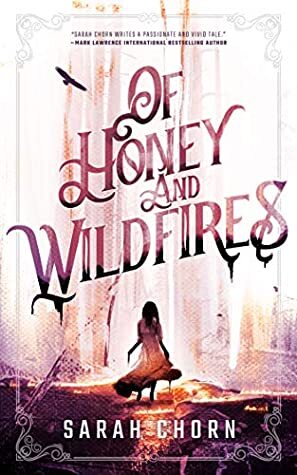
1.Of Honey and WildfiresBy Sarah Chorn
“Of Honey and Wildfires is cut from the very same sort of cloth as Krystle Matar’s Legacy of The Brightwash (though Wildfires far predates it), but is a much quicker read, though no less emotionally devastating. So if you enjoy deep dives into the very crevices of the human soul with the trappings of light fantasy, make sure Sarah Chorn’s Of Honey and Wildfires is on your list – not to mention the two sequels. You won’t regret it.”
Of Honey and Wildfires
From the moment the first settler dug a well and struck a lode of shine, the world changed. Now, everything revolves around that magical oil.
What began as a simple scouting expedition becomes a life-changing ordeal for Arlen Esco. The son of a powerful mogul, Arlen is kidnapped and forced to confront uncomfortable truths his father has kept hidden. In his hands lies a decision that will determine the fate of everyone he loves—and impact the lives of every person in Shine Territory.
The daughter of an infamous saboteur and outlaw, Cassandra has her own dangerous secrets to protect. When the lives of those she loves are threatened, she realizes that she is uniquely placed to change the balance of power in Shine Territory once and for all.
Secrets breed more secrets. Somehow, Arlen and Cassandra must find their own truths in the middle of a garden of lies.
Buy from Amazon
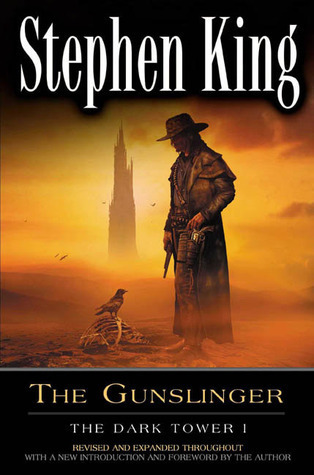
2.The GunslingerBy Stephen King
“The man in black fled across the desert, and the gunslinger followed.
The desert was the apotheosis of all deserts, huge, standing to the sky for what looked like eternity in all directions. It was white and blinding and waterless and without feature save for the faint, cloudy haze of the mountains which sketched themselves on the horizon and the devil-grass which brought sweet dreams, nightmares, death. An occasional tombstone sign pointed the way, for once the drifted track that cut its way through the thick crust of alkali had been a highway. Coaches and buckas had followed it. The world had moved on since then. The world had emptied.”
About The Gunslinger
In the first book of this brilliant series, Stephen King introduces readers to one of his most enigmatic heroes, Roland of Gilead, The Last Gunslinger. He is a haunting figure, a loner on a spellbinding journey into good and evil. In his desolate world, which frighteningly mirrors our own, Roland pursues The Man in Black, encounters an alluring woman named Alice, and begins a friendship with the Kid from Earth called Jake. Both grippingly realistic and eerily dreamlike, The Gunslinger leaves readers eagerly awaiting the next chapter.
Buy from Amazon
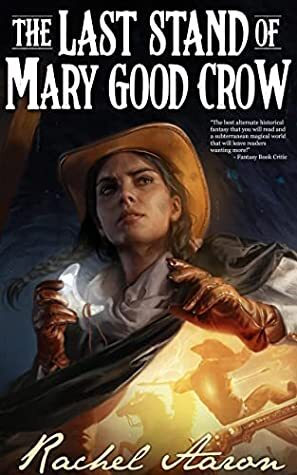
3.The Last Stand of Mary Good Crowby Rachel Aaron
“By midday, though, everyone was up and riled, and the heat made folks mean. There was a reason men dueled at noon.”
About The Last Stand of Mary Good Crow
Deadwood meets The Lord of the Rings in this Epic Fantasy of the West!
Hungry darkness, haunted guns, tunnels that move like snakes—the crystal mines of Medicine Rocks, Montana are a place only the bravest and greediest dare. Discovered in 1866, the miraculous rock known as crystal quickly rose to become the most expensive substance on the planet, driving thousands to break the treaties and invade the sacred buffalo lands of the Sioux. But mining crystal risks more than an arrow in the chest. The beautiful rock has a voice of its own. A voice that twists minds and calls unnatural powers.
A voice that turns men into monsters.
Mary Good Crow hears it. Half white, half Lakota, rejected by both, she’s forged a new life guiding would-be miners through the treacherous caves. To her ears, the crystal sings a beautiful song, one the men she guides would gladly burn her as a witch for hearing. So, when an heiress from Boston arrives with a proposition that could change her life, Mary agrees to push deeper into the caves than she’s ever dared.
But there are secrets buried in the Deep Caves that even Mary doesn’t know. The farther she goes, the closer she gets to the voice that’s been calling her all this time. A voice that could change the bloody story of the West, or destroy it all.
Buy from Amazon
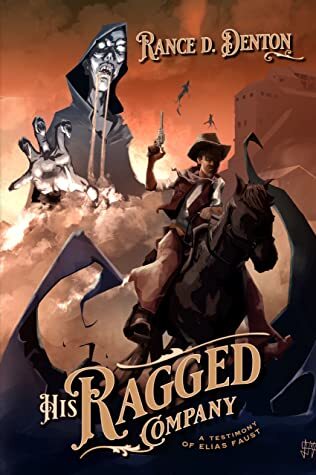
4.His Ragged Companyby Rance D. Denton
“It’s going to be difficult to express how much I adored this book, but I’m going to try my best.
You guys.
This book.”
About His Ragged Company
A pissed-off warlock with a taste for revenge.
An army of sand-golems with fistfuls of magic.
A wishing well with a mind of its own.
No wonder Blackpeak, Texas never got its spot on the map.
Town marshal Elias Faust thinks that he can make any problem go away if he throws enough lead at it. The living’s easy for a lawman. Bloody, but easy – that is, until Magnate Gregdon arrives with his undead syndicate to tear the town of Blackpeak, Texas apart.
When a shootout with a pair of outlaws goes sideways, Elias Faust accidentally draws the Magnate’s attention. As if dealing with arcane sorcery, reanimated corpses, and the Magnate’s personal vendetta aren’t enough, Faust finds himself at the center of a power-struggle for Blackpeak’s eldritch secrets.
Suddenly, staying alive just got a lot more complicated.
Hunted by a cadre of sandshades and hounded by sinister spellcraft, Elias Faust may be the only bag of skin defiant enough to keep Blackpeak from being destroyed. To outlast the Magnate’s disciples, he’ll need to shoot straighter, run faster, and live longer…even if it means sacrificing a part of himself to do just that.
Buy from Amazon
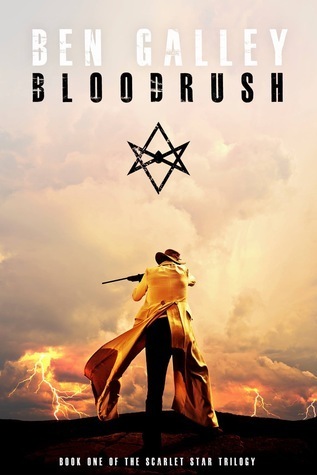
5.Bloodrushby Ben Galley
“What do you think of when we talk of magic?”
Merino scratched his head. “Rabbits in hata. Doves. Cards,” he said.
“Now, that’s magic. What about magick, with a k?”
“I would say you have atrocious spelling.”
About Bloodrush
When Prime Lord Hark is found in a pool of his own blood, his only son Merion Hark finds his world turned upside down and inside out. The Prime Lord’s last will and testament forces Merion west across the Iron Ocean, to the very brink of the Endless Land and all civilisation. To a place they call Wyoming.
In the dusty frontier town of Fell Falls, there is no silverware, no servants, no plush velvet nor towering spires. Only dust, danger and the railway. Merion has only one ally to help him escape the torturous heat and unravel the mystery of his father’s murder: a faerie warrior named Rhin, and a twelve inch-tall outcast of the fae realm.
Revenge and redemption are never easy. There are dark forces at work in Fell Falls, and not just the railwraiths, brigands or the savages. Secrets lurk in Merion’s bloodline. Secrets that will redefine the young Hark, and open up a whole world of magic buried by empire and industry.
Buy from Amazon
The post 5 Stories of Fantasy and The Wild West appeared first on BEFOREWEGOBLOG.
August 31, 2022
Review – Griots: A Sword and Soul Anthology by Milton J. Davis
 As with all anthologies, some of the stories really worked for me and others were a miss. The concept of Sword and Soul as a genre is wonderful, and I’m glad Davis included a section in the beginning of the book that explained its origins and the motivations behind its creation. Though the definition given in Griots is more fleshed out, the bare bones definition is, “Sword and Soul is Sword and Sorcery and epic fantasy based on African history, culture and traditions.”
As with all anthologies, some of the stories really worked for me and others were a miss. The concept of Sword and Soul as a genre is wonderful, and I’m glad Davis included a section in the beginning of the book that explained its origins and the motivations behind its creation. Though the definition given in Griots is more fleshed out, the bare bones definition is, “Sword and Soul is Sword and Sorcery and epic fantasy based on African history, culture and traditions.”
I loved the setting of all of the tales, and the deities/gods that were present were refreshingly different and vividly realized. It certainly felt like I had a new rich world to dive into, and I want more of that. However, the cohesiveness of the collection left me a little confused. Some of the stories read very YA and skewed much younger, but then others in the collection were very decidedly not for younger audiences. I understand the desire to showcase multiple types of voices and writing styles of Black authors, but as a whole, the anthology felt a bit fractured.
Some of the standout stories for me were:
Skin Magic by P Djeli Clark (not a huge surprise as I love their Dead Djinn series already):
A man has ink that writhes under his skin, but unless he can learn to harness the power he wields, it may just ruin him.
The Belly of the Crocodile by Minister Faust:
A very interesting piece of writing told from the perspective of an antagonist; a villain origin story of sorts.
The Three Faced one by Charles R Saunders:
Fantastically written story of a god-touched hero as he stumbles across a conflict between two groups in a forgotten corner of the world. Is this simply human nature at work, or is there a supernatural element to this dispute?
While my overall rating for this is still a 3, the stories I enjoyed, I REALLY enjoyed. So I’m definitely going to be checking out the individual work of those authors as well as reading the Anthology that was released after this one: Griots – Sisters of the Spear.
Buy from Amazon
Griots: A Sword and Soul Anthology•Griots: A Sword and Soul Anthology•Griots: A Sword and Soul Anthology•Griots: A Sword and Soul Anthology•Griots: A Sword and Soul Anthology•Griots: A Sword and Soul Anthology•Griots: A Sword and Soul Anthology•Griots: A Sword and Soul Anthology•
The post Review – Griots: A Sword and Soul Anthology by Milton J. Davis appeared first on BEFOREWEGOBLOG.
August 30, 2022
Review – His Ragged Company by Rance D. Denton
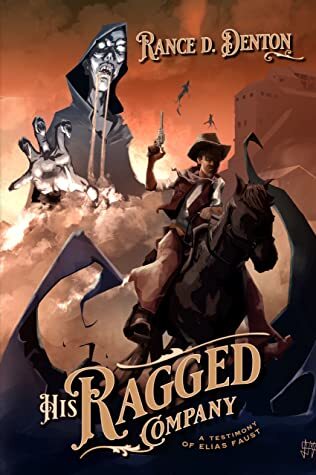 What it’s about:
What it’s about:A pissed-off warlock with a taste for revenge.
An army of sand-golems with fistfuls of magic.
A wishing well with a mind of its own.
No wonder Blackpeak, Texas never got its spot on the map.
Town marshal Elias Faust thinks that he can make any problem go away if he throws enough lead at it. The living’s easy for a lawman. Bloody, but easy – that is, until Magnate Gregdon arrives with his undead syndicate to tear the town of Blackpeak, Texas apart.
When a shootout with a pair of outlaws goes sideways, Elias Faust accidentally draws the Magnate’s attention. As if dealing with arcane sorcery, reanimated corpses, and the Magnate’s personal vendetta aren’t enough, Faust finds himself at the center of a power-struggle for Blackpeak’s eldritch secrets.
Suddenly, staying alive just got a lot more complicated.
Hunted by a cadre of sandshades and hounded by sinister spellcraft, Elias Faust may be the only bag of skin defiant enough to keep Blackpeak from being destroyed. To outlast the Magnate’s disciples, he’ll need to shoot straighter, run faster, and live longer…even if it means sacrificing a part of himself to do just that.
My ThoughtsIt’s going to be difficult to express how much I adored this book, but I’m going to try my best.
You guys.
This book.
Okay let me first say that yes, Rance is my friend, but I tried to keep how much I like his face separate from how much I like his book. I didn’t tell him I was reading it at first so he would be blissfully oblivious if His Ragged Company didn’t work for me and he would never have to know if I set it aside. But sure enough the book sucked me in and chewed me up and spit me out and the next thing I knew I was screaming at him in his DMs about how much I loved every brutal minute of it.
I started HRC on ebook and Rance drops you into some action and shouts “HAVE FUN” while riding off into the sunset. We meet Elias Faust dealing with some sheeeit (that’s now his narrator pronounces the word shit and I stg it’s the best thing about the audiobook) and it takes a minute for the reader to catch the rhythm of the mad canter that the narrative is pulling, but then just when the reader thinks they don’t know what’s what, the narrative takes a deep breath and gives us time to catch us.
At first, it’s not immediately clear that HRC is fantasy, as it takes place in Texas. (Is Blackpeak a real town? I don’t know. I don’t think so?) The first trials and tribulations faced by our trigger happy Marshal Faust seem mundane (albeit deliciously, unflinchingly violent) so maybe it’s just a Western, right?
Wrong.
Something dreadful and ominous in building in the background. Things are happening that begin to catch Faust’s attention. Folks are talking about a Magnate and strange things are happening. Some reviews criticize HRC for feeling like a series of connected short stories, but I think that’s the magic of Rance’s narrative. He draws us in with something familiar—a Western—and then slowly begins to fold in the unfamiliar, the fantasy. Sand zombies, all-powerful beings, a girl made of gold, the Well. He takes a very human and (dare I say) common story of a hard-as-nails lawman in a small town, and shakes that story down to its very foundation, reassembling it into something that transcends the sum total of the stories he told.
Rance’s characters are in turn delightful, heart-breaking, and enraging in all the right places. (Poor Curtis.) His violence hits as hard as Peggy Winters does. His book is not for the faint of heart. Something happened to Faust’s fingers and it made me CRINGE:
“You’d be surprised how much you need index fingers.”
But boy let me tell you I loved every horrible minute of it. AND THE SMACK TALK BETWEEN THE CHARACTERS truly it is the highlight of Rance’s style. I had to go digging around through my highlights and this one made me snort-laugh even though I don’t even remember the context:
“Out here you’re just a cold turd with bad aim and nuts the size of a jack-rabbit’s eyeball.”
I would absolutely recommend His Ragged Company to anyone who likes Western vibes, “OH SHIT” magic, violence that makes your fingers ache, slow-burn storytelling that packs a bloody punch, a painful introspection about the impact of killing, and a character that forces you to confront what love is (is it something beautiful? or something selfish?), and character work that shines in the grey parts of morality. The darkness of the violence is superbly balanced by the irreverent humor of all the characters, and the surprisingly loyalty between them.
And if you’re an audiobook listener like me, definitely scoop this one up on Audible. John Pirhalla lives and breathes all the vibes I crave from a Western setting. Sheeit, it’s a damn good time.
Check Out Some of Our Other ReviewsReview – A Drowned Kingdom by PL Stuart
Review – The Grief of Stones by Katherine Addison
Buy from Amazon
His Ragged Company•His Ragged Company•His Ragged Company•His Ragged Company•His Ragged Company•His Ragged Company•His Ragged Company•His Ragged Company•
The post Review – His Ragged Company by Rance D. Denton appeared first on BEFOREWEGOBLOG.
August 29, 2022
House of the Dragon – 1×02 “The Rogue Prince”
HOUSE OF THE DRAGON 1×02 “THE ROGUE PRINCE” is, as the title indicates, the second episode of the House of the Dragon series from HBO. The prequel to Game of Thrones, it is a chronicle of the Dance of the Dragons civil war detailed in George R.R. Martin’s Fire and Blood. I very much was excited for this episode and started writing my review as soon as I finished watching it for the second time. Why twice? Because one view isn’t enough.
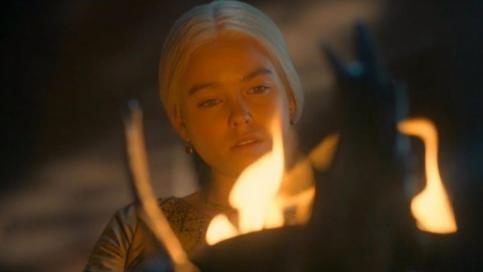 The first thing that I must comment on is the fact that the new opener is fantastic with a drizzle of blood moving through King Viserys’ model of Old Valyria. It’s a sign that everything is going to be even more ominous and nasty than Game of Thrones. The theme music is the same from Game of Thrones, which is a bit like reusing the Star Wars theme. Yes, it’s not original but it’s hard to top perfection.
The first thing that I must comment on is the fact that the new opener is fantastic with a drizzle of blood moving through King Viserys’ model of Old Valyria. It’s a sign that everything is going to be even more ominous and nasty than Game of Thrones. The theme music is the same from Game of Thrones, which is a bit like reusing the Star Wars theme. Yes, it’s not original but it’s hard to top perfection.
This is an action-less episode as it instead focuses on King Viserys and his choice to wed a new bride after the death of his beloved Aemma Arryn. Unfortunately, the best candidate for him to wed is the twelve-year-old daughter of Corys Velaryon. This is something that no one else seems to have a problem with while Viserys, to his credit, is viscerally disgusted by the prospect of.
Unfortunately, Viserys doesn’t win any points with the fact he is willing to marry a girl his daughter’s age. I think with things like the recent Baptist Church, Utah Church, and Matt Gaetz scandals that this is unfortunately topical and shouldn’t remotely be topical.
I also lost a lot of respect for Corys for the exact same thing that Otto Hightower was doing (i.e. pimping his daughter) except even worse due to her age. Mind you, Viserys should have tried to heal the rift by marrying Rhaenyra to Laenor, his son, or at least made a betrothal with them. Rhaenyra as a married monarch is something that would be less controversial among the Lords of Westeros.
 Viserys trying to stand up for himself by marrying an actual woman and yet playing into Ser Otto’s hands is an interesting character beat. It shows that he wants to be powerful but he’s really a puppet and desperate for Otto’s approval. The fact that “I cannot permit you to go” from Otto WORKS when Viserys is about to confront his brother is something no Targaryen or king should have tolerated.
Viserys trying to stand up for himself by marrying an actual woman and yet playing into Ser Otto’s hands is an interesting character beat. It shows that he wants to be powerful but he’s really a puppet and desperate for Otto’s approval. The fact that “I cannot permit you to go” from Otto WORKS when Viserys is about to confront his brother is something no Targaryen or king should have tolerated.
Speaking of which, the next major plot point is Daemon Targaryen attempting to get his brother’s attention by stealing a dragon egg, taking over Dragonstone, and claiming he plans to marry a second wife in violation of the Faith. It fails spectacularly and only avoids becoming a massacre of the King’s Hand and his guard due to the timely intervention of Rhaenyra. It’s also a clear sign to Otto that she’s not the meek puppet her father is and is unsuitable as a potential monarch for the same reason that Daemon isn’t: they won’t be his pawns.
I truly believe Ser Otto didn’t think Rhaenyra would rule or attempt to assert her authority. In retrospect, it’s clear they’re going with the idea that Ser Otto believed she’d be another Viserys he could control assuming that she became queen before Viserys married his daughter. The fact she asserts herself as much as she does sets the stages for his betrayal–with the Kingsguard, her speaking up, and of course her rescuing him on dragonback.
Really, I liked that Otto Hightower was within minutes of being killed by Daemon and all of his men when the dragon blasted them because, of course, Otto wouldn’t back down. It’s a sign that Otto isn’t nearly as intelligent as he thinks he is outside of his comfort zone. He’s so used to being the King (rather than the Hand of the King) that he utterly underestimated how far Daemon would go. It was a nice, “Power is power.”
I think I like Alicent’s character arc here as she’s being forced into the scheming role by her father but is clearly anxiety ridden and terrified of all the repercussions that might hit her. I actually kind of think this is a valid take on her character from the books because we think of the scheming Cersei-like Alicent a lot but we don’t think of her, “kindly nurse Alicent who used to read to Old King Joe.” Still, she doesn’t want to marry Viserys but is being forced to seduce him in sweet ways that amount to faking interest in his Warhammer 40K models.
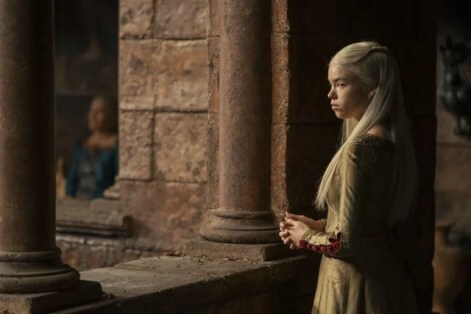 I enjoyed the fact that I got to hear some more dialogue from Mysaria, Daemon’s mistress, but it is done in a terrible “Essos” accent that I think really distracts from the actress’ performance. Still, it’s nice to have any Smallfolk or commoner’s perspective on these sorts of things. I also like how she points out that Daemon’s antics won’t get him killed but might get her killed.
I enjoyed the fact that I got to hear some more dialogue from Mysaria, Daemon’s mistress, but it is done in a terrible “Essos” accent that I think really distracts from the actress’ performance. Still, it’s nice to have any Smallfolk or commoner’s perspective on these sorts of things. I also like how she points out that Daemon’s antics won’t get him killed but might get her killed.
In conclusion, this is a solid episode, but I think the lack of humor and action is a bit of an issue. We could have used a more humorous set of characters to provide levity to the storyline. The fact that so much is spent on child brides and build-up for the inevitable Dance of the Dragons is also a bit of an issue. I can’t help but wonder if they might have been better served by starting with the beginning of the conflict with all of this as backstory.
THE ROGUE PRINCE•THE ROGUE PRINCE•THE ROGUE PRINCE•THE ROGUE PRINCE•THE ROGUE PRINCE•THE ROGUE PRINCE•THE ROGUE PRINCE•THE ROGUE PRINCE•
The post House of the Dragon – 1×02 “The Rogue Prince” appeared first on BEFOREWEGOBLOG.



